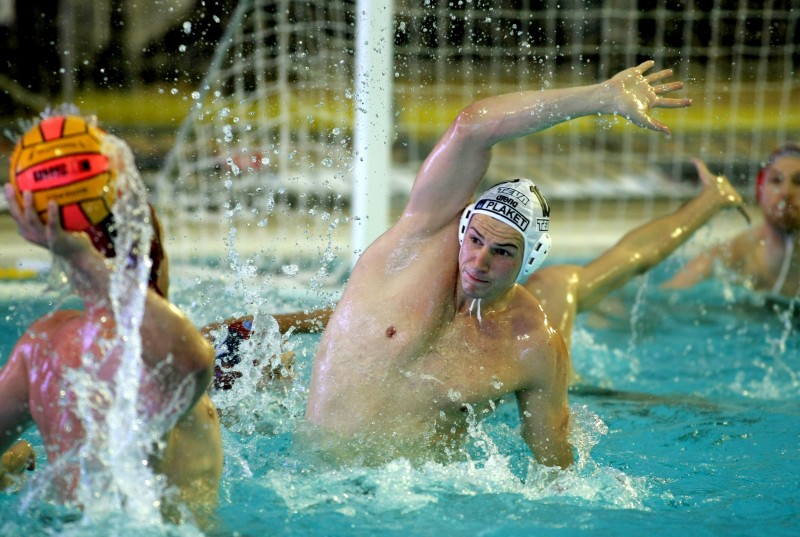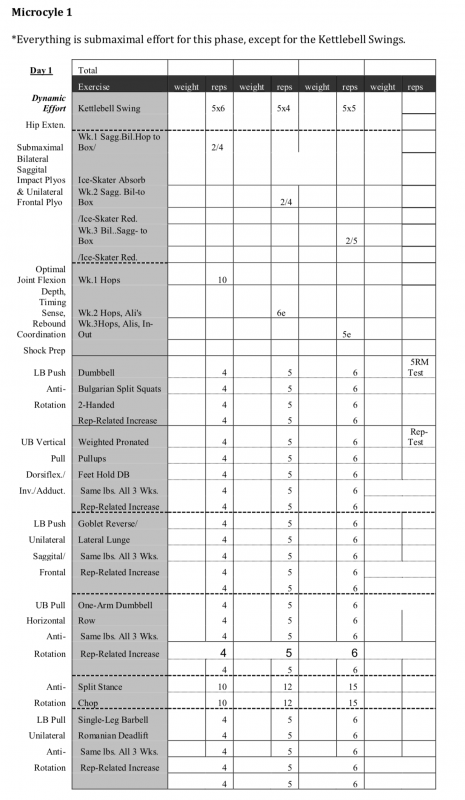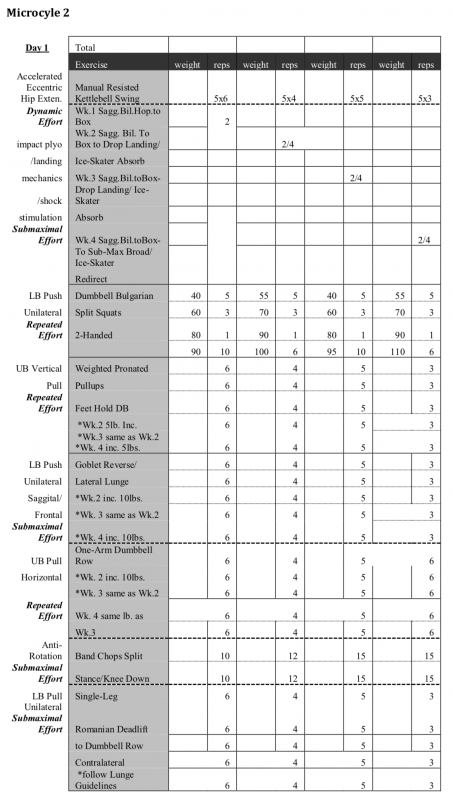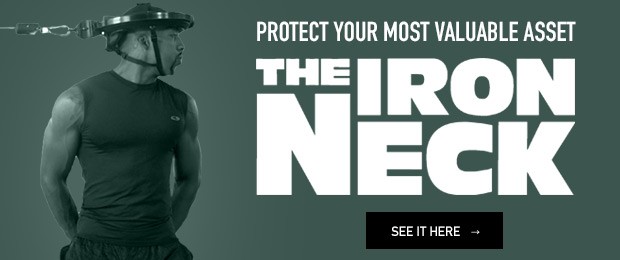
Header image credit: venimo © 123rf.com
There are countless programs, methods, templates, and emerging ideas specific to the training of collegiate athletes in the strength and conditioning field. When I began, I was fortunate enough to have my mentor hand me Science and Practice of Strength Training by Vladimir Zatsiorsky. Ten years later, this text is still considered to be one of the preeminent sources for concepts surrounding physiology, kinesiology, and programming considerations, and will indubitably continue to be. Receiving an inimitable text such as this at the beginning of my career proved to be fortuitous; I didn't have to sift through the mountain of information that saturates the field.
The notion of a program – nonetheless one for an athlete – was novel, and rather overwhelming at the dawn of my career. I have found it to be just as confounding for most up-and-coming collegiate strength coaches. Simplicity is key in order to comprehend such an intricate topic. Approach programming as you would approach written materials relevant to our field. One doesn't simply open Supertraining by Mel Siff and Yuri Verkhoshansky, and begin perusing its contents. Supertraining requires a foundation of knowledge prior to endeavoring to cognize its contents. First, as we all must do, read the CSCS textbook, pass the exam, and then open Zatsiorsky’s texts. Once you’ve grasped the bulk of his work, then you may begin to open Verkhoshanky’s work. Therefore, understanding programming begins with discerning its most basic elements. Certain templates are significant constituents of any regimen, and are what one should look to first.
RECENT: The Yoke: A Reflection of A Person’s Intangibles
Irrespective of the counterarguments that many may render, collegiate strength programming is descendant of powerlifting. The primary movements that strength coaches administer – upper push and pull, and lower push and pull – all represent mutations of the barbell bench press, barbell row, squat, and deadlift. The manner in which they are employed adheres to Westside protocol. The impact that Westside has had on programs across the board is irrefutable. Read the Westside Squat and Deadlift Manual; read templates Dave Tate published regarding Westside years ago because they apply to programming today, as well. Allow these to be your foundation.
If the above were fallacious, then priority wouldn’t be lent to the four, compound gross motor patterns mentioned above, especially in maximal effort form. Most templates at the collegiate level devote the first true block, brick, or tier to a squat, deadlift, and bench variant. Obvious precursors to priority movements are CNS excitation drills, succeeding a dynamic warm-up. The quantitative (volume) aspects concerning these exercises are dictated by the form of periodization that the coach decides to implement.
Nevertheless, the movement will eventually be tested. Testing in and of itself contains complexities deserving of their own article, but we may safely presume that an estimated 1-Repetion Maximum (RM) has to be established, and may be done so through varying means – not only to ascertain each athletes’ individual numbers, but also to track progress and share performance decrements or accretions with ATCs and sport coaches. Consequently, the maximal effort method is employed, as it should be, for its unassailable effects on the nervous system, intermuscular and intramuscular coordination, and the musculoskeletal system. It may be done so sparsely, but it is reliably exercised.
Dynamic effort is utilized with simple, qualitative (the drill itself) alterations. Rather than speed squatting or pulling, medicine ball movements and plyometric work are accentuated. Typically, quantitative aspects are parallel to speed-strength considerations, with repetitions going no higher than three per set.
The repeated effort and submaximal effort methods are instituted in the latter portions of a training day reserved for ancillary movements that burgeon capability in the primary, tested pattern, and contemporaneously address common sites of injury respective to that particular sport. Versions of the maximal effort movements, and the supplemental and accessory exercises that a collegiate coach utilizes, are mutations of the powerlifts and their ubiquitously accepted supplementary drills. The only defining difference is that an Olympic sport or football program’s selection of modifications of the aforementioned is predicated on a sport’s biodynamic considerations. Essentially, a sport’s frequent injury sites will dictate the subordinate movements of each day, and the primary sporting activity will determine the priority movement.
Image credit: sportgraphic © 123rf.com
Transference of training effect of the squat and deadlift is sizeable, irrespective of the sport. Even water polo players will attest to the specificity of bilateral and unilateral squat variations. The subsequent task is to select appropriate variants for sport. Field experience has shown that unilateral hip extension and knee extension movements, such as the Bulgarian Split Squat (BSS), are the most germane for baseball. The BSS directly stimulates the VMO, correcting patella tracking and preventing patellofemoral syndrome. This is especially useful for catchers who are constantly in deep knee flexion, as it provides triple stability of the ankle, knee, and hip joints, and eliminates superfluous duress on the glenohumeral joint with loading of the hands. Furthermore, it fortifies grip requisite for hitting and throwing, dynamically stretches the hip flexor of the elevated leg, targets the hamstrings to a sizeable degree (thereby mitigating potential cartilaginous and ligamentous damage of the structures pertaining to the knee joint), naturally minimizes the predisposition to incline the trunk during the ascent, and lends itself as a great anti-lateral flexion and anti-rotation implement. Additionally, the capacity to express power in a pitch or swing is derived from lower body strength.
Due to the antecedent, we may categorize this as a priority, or supplementary movement. If one chooses to classify this as a supplementary squat movement, elect the priority hip extension or knee extension movement assiduously. Baseball, serving as the example, has an elevated risk of shoulder and elbow injury. Placing a barbell on a pitcher’s back, or in the rack position of a front squat, should be contraindicated. Barbell back squats have a tendency to aggravate the external rotator of the cuff, and incite inflammation at the elbow joint due to compressive forces on the proximal attachment of the biceps. The front squat demands tremendous flexibility in the wrist, shoulder, and lateral muscles that most athletes lack, and strength coaches simply don't have time to greatly reduce these inhibitions. The unnatural extension of the wrist and fingers to keep the bar racked on the anterior deltoid is a great liability in promoting the health of said joints, and ultimately, adversely affects the elbow as well. However, bilateral lower body pushing movements shouldn't be ignored. If you have a Safety Squat Bar (SSB), it may behoove joint health, and the maximization of athletic potential, to back squat bilaterally with this implement
The SSB removes duress on the shoulder girdle and commands elevation of the superior trapezius, promoting scap function. Collegiate athletes will undoubtedly bastardize depth, so the administration of a box would be advantageous. Box squats, much like Westside itself, receive an unnecessary amount of scrutiny. Squatting to a box with technique reminiscent of wide-stance powerlifters engages the hip flexors in all three planes of motion, promotes static overcome by dynamic strength, and induces three-to-four-fold larger rate of force development values than all other derivatives. It also reduces internal forces at the knee joint and optimizes hip extensor recruitment due to maximal posterior hip displacement, and is, to the consternation of many of its opponents, actually gentler on the ankle and lumbar than its counterparts. Furthermore, it teaches favorable technique. With traditional squats and front squats, collegiate athletes will enter a state of eversion at the ankle, the pronation of which will instigate stress on medial ligamentous structures of the knee joint and reduce fore production capabilities, due to the internal rotation of the femur. Proper box squatting forces hip displacement posteriorly, and causes the athlete to emphasize ground force production through the lateral portion of the sole and heel. The corollary of the “out at the knees, and back with the hips” technique is external rotation at the femur, an internal environment supportive of maximal torque and minimization of unwanted internal forces.
We now have the SSB Box Squat and the BSS as our priority, along with the respective supplementary movements for our baseball program. Both attend to longevity and optimization of performance. Our maximal effort, repeated, and submaximal effort methods have been assigned, respectively.
Most sporting actions are plyometric actions, which are inherently Stretch-Shortening Cycle (SSC) actions. It is widely known that minimization of the Amortization phase of the SSC – diminishment of ground contact time between eccentric and concentric phases – will augment power, with power being expressed as either a force-velocity relationship, or as the product of work and distance divided by time. Awareness of the preceding, in conjunction with the fact that the ability to elongate the elastic and connective components of the muscle complex arouses accruals in power and proficiency of human movement, guides us in our selection of dynamic effort method movements.
Plyometrics and the shock method are quite distinct. Criterion for performance of the shock method is momentous, and unfortunately this method is implemented erroneously to the disadvantage of the athlete. While my programs include the shock method, it is only instituted sub-maximally off of a 75cm box in the third micro-cycle after specific criteria – ranging from preparatory barbell work accentuating eccentrics to strengthen connective tissue to withstand impact forces, to hops in place to instill awareness of joint flexion, timing, and coordination – have been met. Induct the athlete into dynamic effort training with simple plyometrics, otherwise referred to as any movement where the eccentric phase is suddenly interjected by a large, isometric force that synthesizes a concentric action. A broad jump is a great example of an eccentric action interrupted by an explosive, isometric action, minimal in duration, and it serves as a simple tool to impart the benefits of a rapid stretch. The myotatic stretch reflex will ignite aggrandizements in the concentric portion of the movement, most notably when one expedites the rate of stretch. Consequently, we are teaching the athlete to move, and more specifically, how to move. Plyometrics also teach an athlete how to land and absorb forces. Proper landing technique is a preemptive measure against ACL injuries.
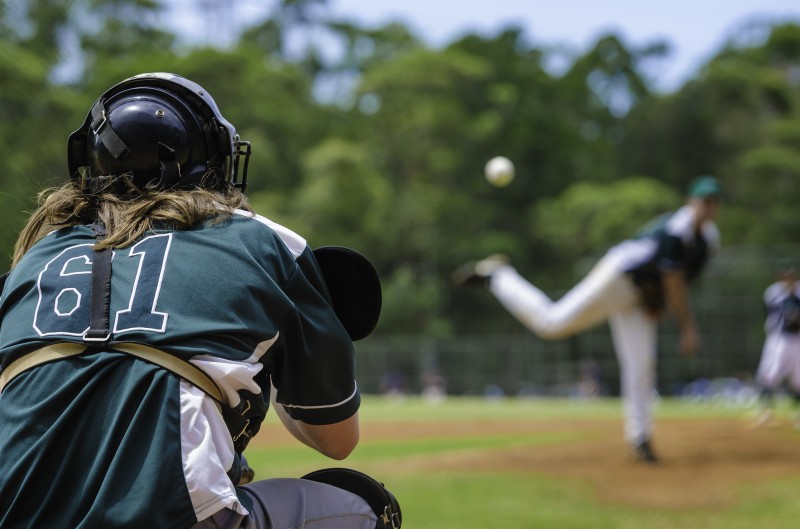
Image credit: pripir © 123rf.com
The base of the program is now constructed with the SSB Box Squat as our maximal effort movement, the BSS serving as a repeated effort or submaximal effort movement supplementing the SSB, and the Broad Jump attending to our dynamic effort considerations. While it may seem a bit daunting, the other portions of your program can (and should) be submaximal effort movements, coeval with Prilepin’s Chart guidelines.
Relative strength patterns will attenuate the demand that body mass places on the athlete during the take-off and push-off in sprinting. Pull-ups with the feet supporting a dumbbell have been a staple during my time with Division-I athletes, due to the inversion and dorsiflexion of the ankle. This improves take-off power, minimizes sprains and shin-splints, and engages the adductors of the hip. In short, this movement has the ability to reinforce appropriate technique.
Ancillary movements can be indispensable elements to the success of an athlete’s career, so movement selection in this regard should be taken as seriously as designating your priority movement. The 3D band pull-apart burgeons shoulder health. This specific drill invokes a myriad of actions: flexion of the glenohumeral joint and concomitant upward rotation of the scap; elevation of the scap, forcing the superior trapezius to resist its depression; horizontal adduction, abduction, and corresponding protraction and retraction targeting the infraspinatus, teres minor, middle, and inferior traps. Such a seemingly simple movement has great implications, and tends to many sport-specific concerns.
The glenohumeral joint is the weakest of the ball-and-socket joints in the human body, and requires stability – which stems from strength. Given that said area is an incessant concern in baseball, one must be judicious in selecting the exact implementation to burgeon upper-body strength. Dumbbells are superior tools for pressing in the training of baseball players. The instability, and freedom of movement at the wrist that the barbell doesn't purvey, with greater range of motion and core activation, make it a tremendous tool to facilitate strength increases and stabilize the shoulder joint. Dumbbell Bench Press typically serves as the maximal effort movement, and Dumbbell Military Press as our supplementary, submaximal effort, vertical-push movement.
Despite the barbell row being the superlative method for augmenting upper-body pulling strength and squat, deadlift, and bench press capability, athletes – anecdotally speaking – will allow their egos to overshadow their technique. Therefore, the dumbbell one-arm row is a great modification, allowing for retraction, anti-rotation elements, and a wider margin for error. Sports whose primary actions take place in the transverse plane require resistance of rotation to enhance strength within that very plane. Unilateral movements are vital for their anti-rotation and anti-lateral flexion elements.
Provided below are two versions of “Day 1”, the acclimation phase constituting Micro-cycle 1 and the succeeding phase Micro-cycle 2, of the fall season with a Division-I baseball team that I worked with for two years. There are many nuances contained herein, but it demonstrates how many of the principles discussed previously are implemented within the confines of the beginning two micro-cycles of the year.
One will notice that the repeated effort method is used for the priority movements in Micro-cycle 2. This is due to the fact that collegiate athletes can be depended on to not train over the duration of the summer. We provide them with a three-week acclimation phase, exhibited in “Micro-cycle 1 Day 1,” and then test them with a 5RM, allowing us to accurately estimate their 1RM. This three-week acclimation period allows for relevant movement patterns and musculature to be engrained and strengthened, after which we can test and then formulate their individual numbers. Micro-cycle 2 contains intracycle testing. By weeks three and four, the athlete is expected to perform a 10RM at 77%, and a 6RM at 87%, respectively. This means that the athlete executes a 10RM at 2% higher than their original 10RM, which is considered to be 75% of one’s 1RM. Additionally, week four requires the athlete to perform a 6RM at 87%, or 2% higher than their original 6RM of 85%, resulting in a 10-pound total increase. This approach allows the team to augment their BSS without being exposed to maximal percentages until their third micro-cycle. This is another example of modifying quantitative conventions for the population with which you are working.
If you can teach an athlete to hinge and squat, you’ve done a great portion of your job. Improve their kinesthetic awareness while in motion, jumping ability, landing technique, and strength, and you’ve done one hell of a job. Stick to the derivatives of the “big four” (squat, bench, deadlift, and row), and the four methods (maximal, repeated, submaximal, and dynamic), and the program will become far easier to construct. The big four and the four methods comprise what I tell coaches is their North Star, and refer to as “The Four’s.” When in doubt, stick to the principles of “The Four’s.”
One of the few caveats that many coaches recommend is refraining from instructing movements that you are not comfortable with. Apart from my distaste for Olympic lifts, I am awful at them. Teaching hip extension through a kettlebell swing and a SSC-dominant movement with significant triple extension is far more feasible. We have 45 minutes with a team, and a significantly smaller fraction of the allotted time is consumed by tutorials compared with an Olympic Complex, or any variants of the Snatch-and-Clean. (Note that we did not have enough SSB Bars to utilize them in any fashion, so the BSS was our priority movement). The following program was utilized during the 2017-2018 season at a Northeast Conference School, and facilitated in the following:
- MLB Draft Pick (Mets)
- NEC Championship Runner-Up
- NEC Regular Season Champions (2nd Time in Program History)
- Most Single-Season Conference Wins in Program History (21)
- Most Single-Season Wins in Program History (38)
- Most Road Victories in the Nation (23)
- Two Longest Win Streaks in Program History (9 each)
- First 30-Win Season since 2009
- All-time Career Hits Leader (252)
- Program Record 6 All-NEC Honors
- 4 All-ECAC Honors, Two All-NEC Tournament Team Honors, 2x Johnny Bench Award Watch List Nominee, 2 ABCA/Rawlings All-Region Team Honors.
*Dotted lines between successive exercises denote that the movements above and below that dotted line are performed consecutively, without rest. To the left of all exercises is a description of its purpose, along with the type of effort utilized for the execution of that exercise. It is helpful when sending programs to ATCs and sport coaches, as well as other strength coaches, to have a brief description of the movements in the margins to explicate its purpose clearly and concisely.










